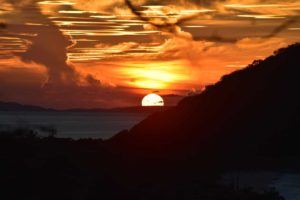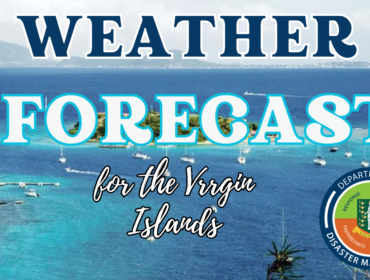Initial predictions are that the 2014 Atlantic
Hurricane season will record less than normal activity.
The prediction comes on the heels of a 2013 season
that was usually quiet and which produced no major hurricanes for the first time since 1994.
Initial forecasts from ImpactWeather and The Weather
Channel point to the likelihood of El Niño developing. El Niño as described by
The Weather Channel is “warmer than average sea-surface temperatures” which can
occur every two to five years. According to The Weather Channel, El Niño occurs
“when weaker trade winds allow warmer water around the equator in the far eastern
Pacific Ocean to emerge. That warmer water changes wind patterns and alters
storm cycles around the globe.”
Noting that “an El Niño typically produces
elevated levels of wind shear across the Tropical Atlantic, resulting in a less
favourable environment for tropical cyclone development,” ImpactWeather predicts 10 named storms, four of which will become
hurricanes, with one becoming an intense Category 3, 4, or 5 hurricane.
According to the ImpactWeather forecast, “The 2014
season will likely feature a
low number of long-tracked tropical cyclones. The prime development regions may
be closer to land, perhaps in the western Caribbean, the Gulf of Mexico, or off
the Southeast U.S. Coast.”
The Weather Channel
cautions that even with El Niño, strong tropical cyclones
are still possible and reference is made to the 1992 hurricane season, which
was an El Niño year and featured only seven named storms, the first of
which was Hurricane Andrew which caused US $26 billion in damage in the Bahamas
and US mainland.
Colorado State University has traditionally provided a
quantitative forecast but opted this year for a qualitative discussion on the
factors that will influence activity during the Atlantic hurricane season. Like
other forecasters, Professors Philip J. Klotzbach and William M. Gray believe
the likelihood of El Nino developing is fairly high. They have identified a
number of possible scenarios which could be witnessed during the 2014 season,
all of which deal with the level of Thermohaline Circulation (THC), which is
part of large-scale ocean circulation controlled by horizontal differences in temperature and salinity.
Despite the less than normal activity being predicted,
Director of Disaster Management, Ms. Sharleen DaBreo said it is important that
residents of the British Virgin Islands be prepared. “We may not have the power
to stop hazard impact but there are measures we can take to minimise the level
of impact. Prior to the start of the hurricane season, we should trim trees and
cut all dead or weak branches, check the validity of home and auto insurance
policies and know the location of the nearest emergency shelters,” Ms. DaBreo
said. “It is important too that we
recognise significant flood events that are occurring outside of the hurricane
season. In December 2013, a low level trough resulted in rapid, intense
rainfall which impacted Dominica, St. Lucia and St. Vincent and the Grenadines,
which was the worst affected, with damage and losses calculated at US$108.4 million,” the
DDM Director stated.
She is also encouraging families, schools and
businesses to create their disaster plans and to prepare disaster kits comprising
of emergency supplies such as water, food, medicine and essential documents. “We
cannot afford to be complacent. The BVI has been spared major hurricane impact
but that does not mean we are not vulnerable. We must do whatever we can to
safeguard ourselves and our property,” she added.
The DDM has been focusing on building capacity on the
sister islands and has carried out Community Emergency Response Team (CERT)
training on Anegada, Virgin Gorda and Jost van Dyke. Similar training is now
being carried out on Tortola in collaboration with the BVI Red Cross.
The Atlantic hurricane season runs from June 1 to
November 30.



